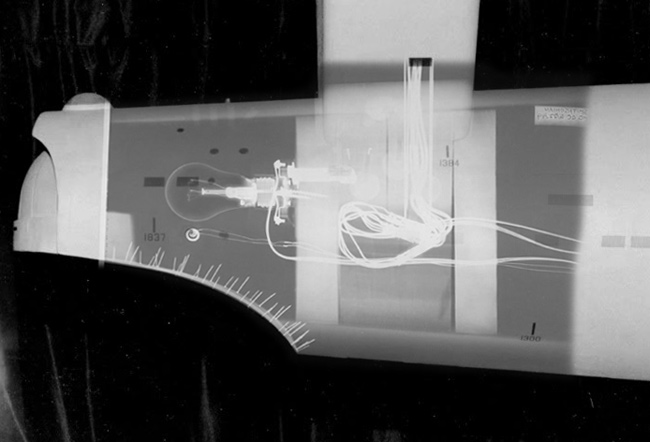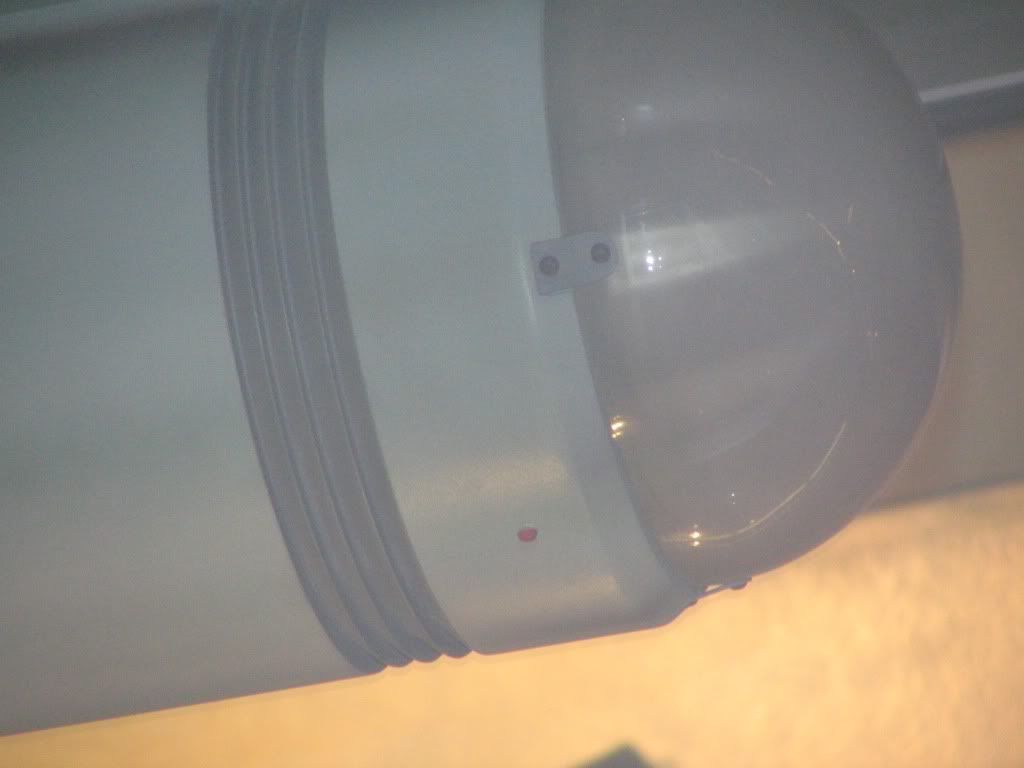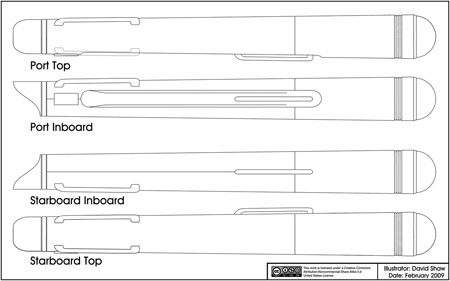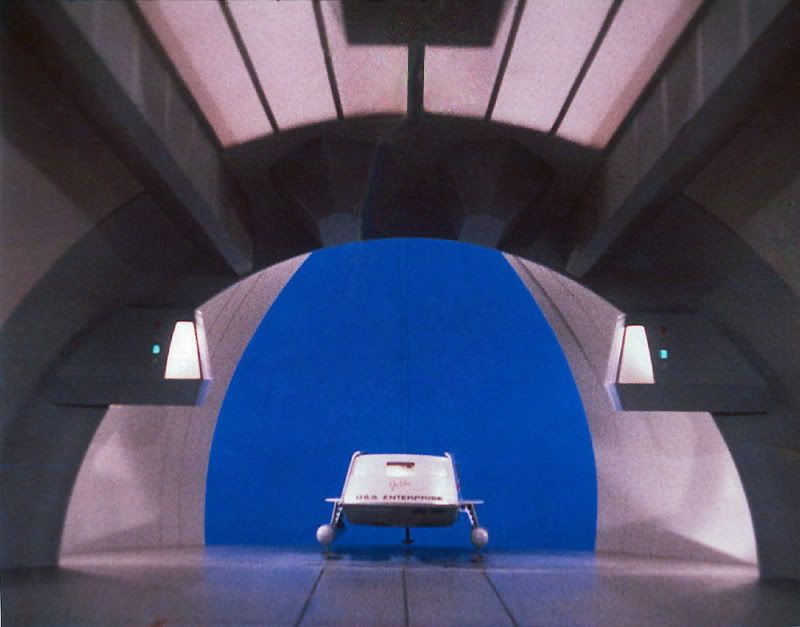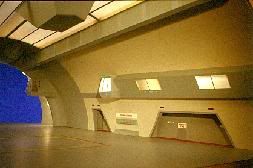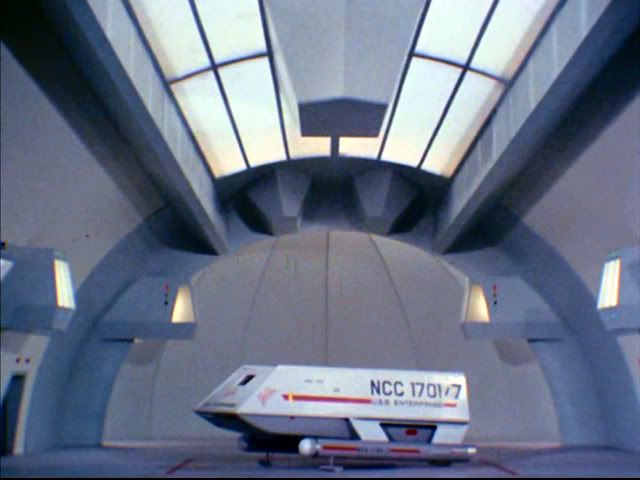Hey feek61 and fans, did you check out those fantastic restoration pictures at Kurt Khun´s site? Did you notice that the beacon over the shuttle bay appears to have been three lights in one? (even though it only appeared greenish white in the second and third season of the TV show).
There was a green disk with a cutout, perhaps for a light, but also what looks like a red and an orange lamp also on the disk, which was underneath the clear dome which goes over the shuttle bay.
And yet, in all those restoration pictures, all the original lamps and wires have already been removed and undocumented. All I could see were some light tubes (the early 60s equivalent to today´s fiber optics) inside the gouged out wooden B deck. The gouged out wood is testimony to the fact that the model did not originally have any lights.
Contrary to some magazine articles which stated that the saucer was made from vacuformed plastic, viewing of the pictures seem to indicate that the saucer was also made of wood, or a wooden framework for support, and then finished and covered with thin plastic.
Also interesting is that even though I have heard stories that the top plastic part of the saucer can be removed to access the wires and lights, to date I have seen no photographic evidence that the top part of the dish has ever been opened up since it was last worked on in 1966, when weathering, details, and additional lights were added. The edges look clean, with no parting lines indicating separate sections.
It seems that the 11 foot model is so large that one can just fish and route the wires and lights inside the hull without taking the saucer completely apart. Or am I mistaken?








